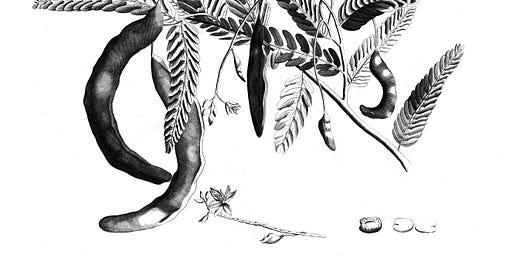Tamarind
Hendrik van Rheede, Public domain, via Wikimedia Commons
Tamarind
Malay: Asam Jawa, Asam Kranji, or colloquially, just Asam (especially in Baba or Peranakan Malay, and Bahasa Indonesia)
While tamarind is only one of a large group of “sour fruits” (buah asam, from masam = sour) used in Malay cooking, its importance can be deduced from the way “asam,” used unmodified, invariably refers to tamarind. The inverse – that we tend to use its full name, “asam jawa,” less than we used to, suggests a culinary and linguistic narrowing, a signal that the other buah asam are gradually fading from popular consciousness in Singapore.
Indigenous to tropical Africa, the tamarind tree was naturalized in Asia in antiquity. It’s widely cultivated, with large plantations throughout the Indian subcontinent and nearly everywhere in Southeast Asia. The tree bears a long, pod-shaped fruit, in which up to a dozen seeds are surrounded by a tangy pulp, the whole mass clutched by a few long, venous fibers. It’s this pulp, used as a souring agent, which is central to Singaporean food.
Keep reading with a 7-day free trial
Subscribe to let them eat cake to keep reading this post and get 7 days of free access to the full post archives.



